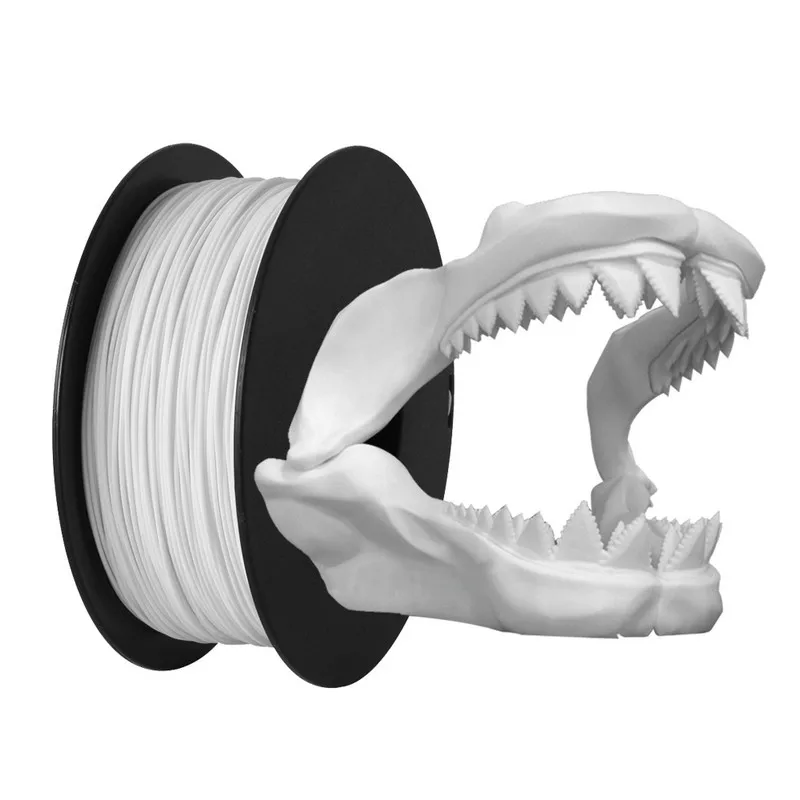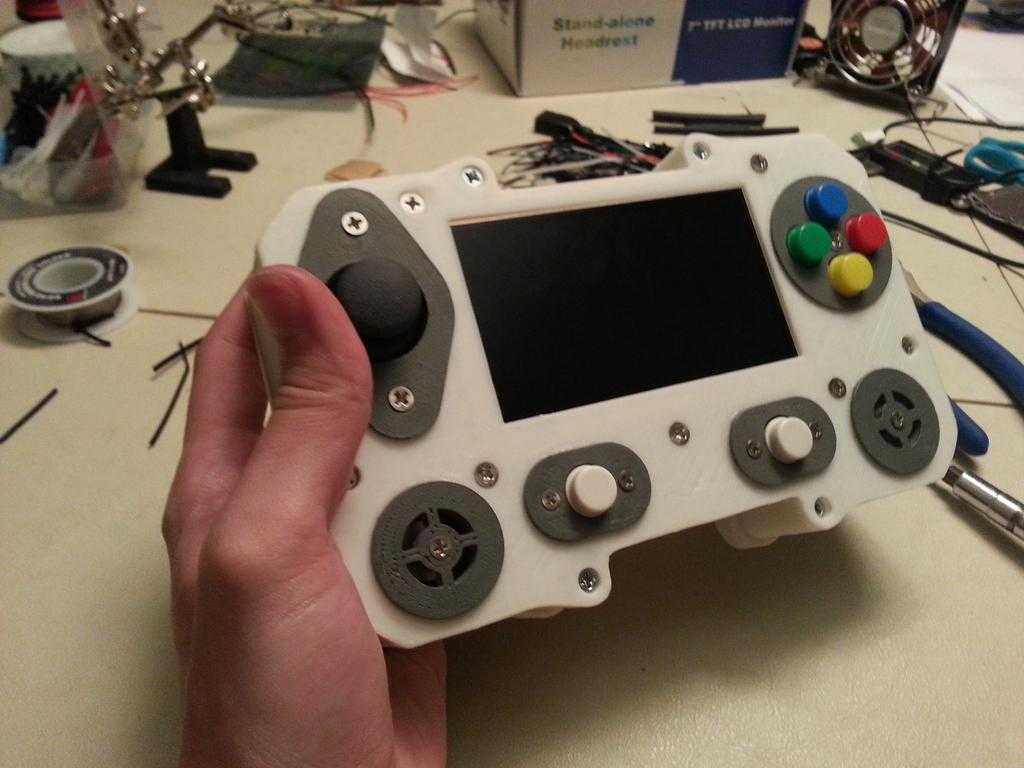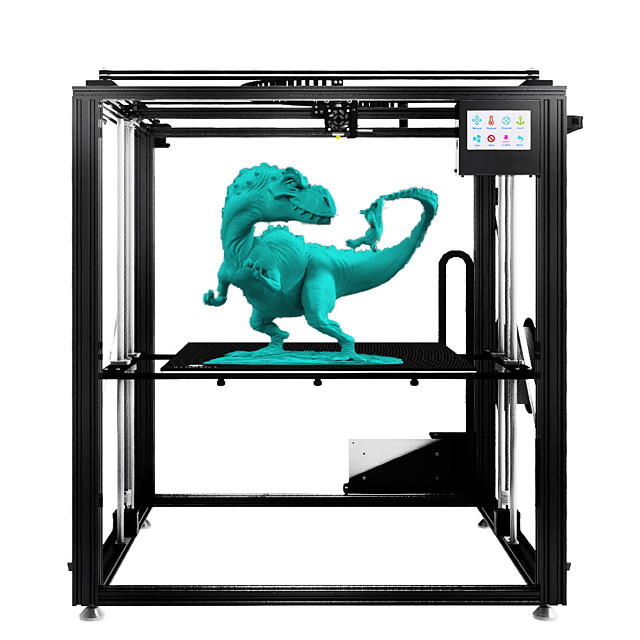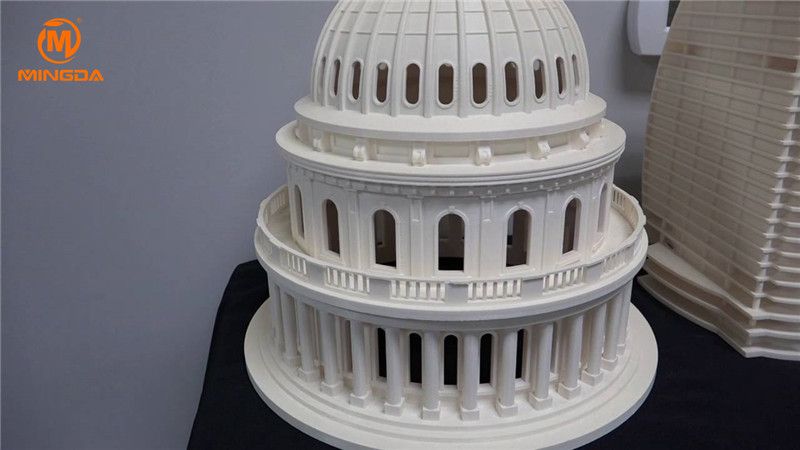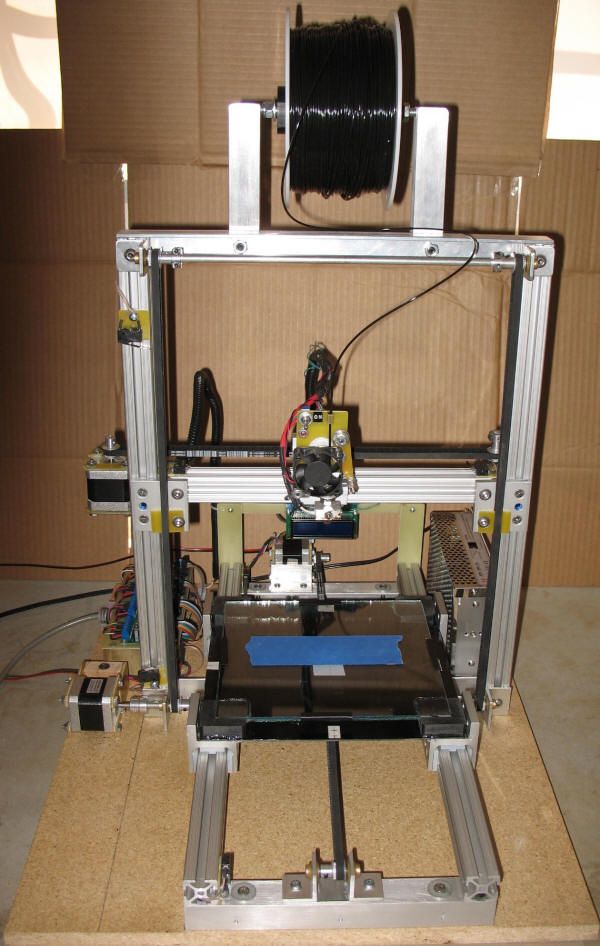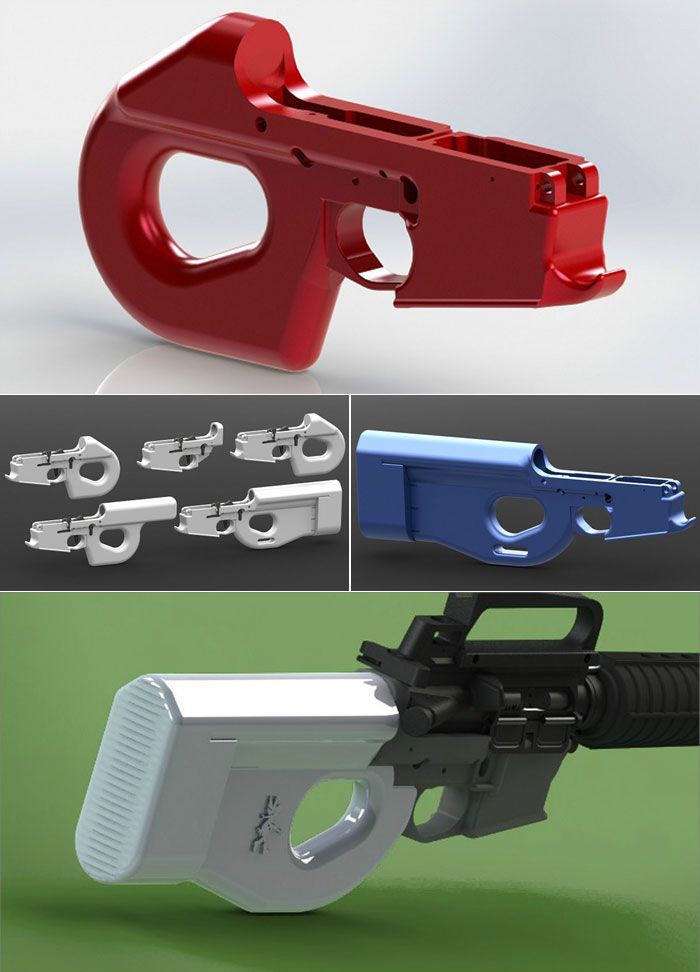Most affordable 3d printer 2023
The Top Cheap 3D Printers on the Market
Published on February 3, 2022 by Alexandrea P.
The democratization of 3D printing has led to a meteoric rise in the number of machines available on the market, but above all to a strong competitiveness when it comes to price. It is currently possible to buy a 3D printer for about $100, where even a few years ago it cost $2,000. Now more than ever, it is easier to get a desktop 3D printer and get started without spending a fortune. But with so many cheap 3D printers on the market, which one should you choose? We made a selection of machines, mainly FDM and SLA, at low prices (less than $500), ranked in order of increasing price. Do take note that there are many models: our list is not exhaustive!
The da Vinci Nano 3D Printer from XYZprinting
One of the brands that we could not fail to include in our list of cheap 3D printers is undoubtedly XYZprinting. With a range of more than 20 3D printers, we have chosen the da Vinci Nano, a desktop FDM solution that was launched in 2017. Based in Taiwan, XYZprinting has developed this 3D printer compatible with the company’s proprietary PLA and PETG filaments. It features a limited print volume of 120 x 120 x 120mm, a weight of 4.7kg and an enclosed enclosure that offers enhanced security while preventing part deformation. The da Vinci Nano has a print speed of 70mm/s, is compatible with XYZmaker Suite software and accepts stl, 3w, obj, 3mf and many more formats. You can purchase this machine from $199.95 from the manufacturer’s website.
Photo Credits: XYZprinting
Voxelab Aquila
Marketed by Chinese 3D printer manufacturer Voxelab, the Aquila 3D printer series is based on FDM technology. Delivered partially assembled, printers of the series should be easy to install. Compatible with standard thermoplastics, such as PLA, ABS or PETG, they offers a printing volume of 220 x 220 x 250 mm. Easy to use, the machine would be according to the manufacturer very quiet during the printing process, with a sound estimated at 50 decibels. The Aquila is particularly aimed at beginners in 3D printing and is intended to introduce them to the technology. The machine works with Cura, Simplify 3D and VoxelMaker software and like many 3D printers, supports STL and OBJ formats. For those who wish to go further, improved versions of the Aquila exist. On the manufacturer’s website, the machine is sold at a price of 160 euros, not including shipping.
The Aquila is particularly aimed at beginners in 3D printing and is intended to introduce them to the technology. The machine works with Cura, Simplify 3D and VoxelMaker software and like many 3D printers, supports STL and OBJ formats. For those who wish to go further, improved versions of the Aquila exist. On the manufacturer’s website, the machine is sold at a price of 160 euros, not including shipping.
Photo Credits: Voxelab
A Cheap 3D Printer Kit
Anet Technology is a Chinese company founded in 2015 that offers cheap 3D printers, both resin and FDM machines. Among its range, you’ve probably already heard of the Anet A8, a 3D printer in kit form that is easy to assemble and use. With a volume of 220 x 220 x 240 mm, it allows all beginners to quickly learn about 3D printing. We can also mention the Anet ET range, especially the Anet ET4 model that was launched in August 2019. It features an end-of-filament detection system, a touch screen and a more generous print volume (440 x 340 x 480 mm). The Anet ET4 machine starts at $189 on the manufacturer’s website, or about €167.
The Anet ET4 machine starts at $189 on the manufacturer’s website, or about €167.
Photo Credits: Anet Technology
The Mini Delta V2 3D Printer from Monoprice
A common favorite among many low-cost 3D printer connoisseurs, the Monoprice Mini Delta V2 3D Printer is available from $199.99. As you might have guessed, the V2 is an update to the already popular Mini Delta from the company, taking customer suggestions in mind. Some of the exciting features include an adaptive touchscreen and an updated and simplified user interface. The company also notes that it has updated the auto leveling system to make start-up faster. Of course, users can still expect the features that were so loved in the previous version, including USB Connections, slicing that is compatible with Cura or open-source software and a small and compact size. The build volume is 110 x 120mm, it is compatible with PLA, ABS, Wood Fill, Copper Fill, Steel Fill and Bronze Fill and can print at a sped of up to 170mm/sec.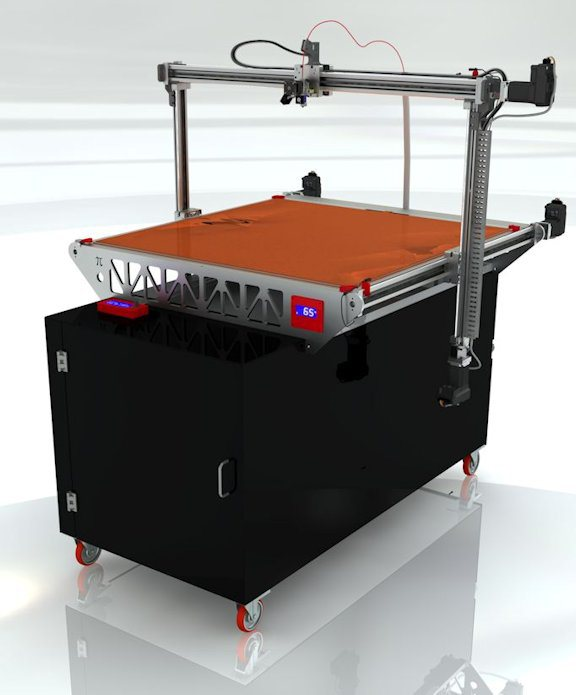
Photo Credits: Monoprice
Photon Mono, A Cheap Resin 3D Printer
Anycubic is one of the most popular cheap 3D printer manufacturers on the market. It has developed a wide range of products, from FDM models to small machines from the SLA office. The manufacturer recently introduced the Mega X, an FDM solution that can create 300 x 300 x 305 mm parts with a suggested print speed of 60 mm/s. The focus, however, will be on its Photon line, which relies on a light-curing process. One of the most affordable machines is the Photon Mono, which incorporates a monochrome LCD screen to design parts measuring 130 x 80 x 165 mm. Exposure time is reduced to one second and the manufacturer claims its screen is 4 times more durable than a conventional LCD. The Photon Mono is available from $199 on Anycubic’s website or 175 euros.
Photo Credits: Anycubic
Cheap 3D Printers From Creality
Creality is one of the most popular companies when it comes to offering cheap 3D printers. It has several lines of machines that work with different manufacturing technologies, and this time we wanted to highlight three of them. The first and most economical is the Halot ONE, a resin 3D printer based on LCD technology. With a print volume of 127 x 80 x 160 mm, the machine can be purchased for a price of $229. One of Creality’s most popular solutions is the Ender 3 v2, capable of printing with a wide variety of materials, such as ABS, PLA and wood, with a print volume of 300 x 300 x 400 mm, a replaceable 0.4 mm nozzle, and a final price of$262. Also worth mentioning is the CR-10 Smart, one of the newest machines in the CR series launched by Creality, which has a higher price of $479.
It has several lines of machines that work with different manufacturing technologies, and this time we wanted to highlight three of them. The first and most economical is the Halot ONE, a resin 3D printer based on LCD technology. With a print volume of 127 x 80 x 160 mm, the machine can be purchased for a price of $229. One of Creality’s most popular solutions is the Ender 3 v2, capable of printing with a wide variety of materials, such as ABS, PLA and wood, with a print volume of 300 x 300 x 400 mm, a replaceable 0.4 mm nozzle, and a final price of$262. Also worth mentioning is the CR-10 Smart, one of the newest machines in the CR series launched by Creality, which has a higher price of $479.
On the left, the Halot One 3D printer. On the right, the Ender-3 V2 (photo credits: Creality)
The X-ONE2 from QIDI Tech
You may have already heard of QIDI Tech, a Chinese manufacturer of both FDM and LCD resin 3D printers, as its X-Pro 3D printer is often listed is one of the most popular cheap machines on the market. It is known for its Turbofan which blows on all four sides, removable plate, dual extruder and breakpoint printing. However, we also wanted to draw your attention to another FDM printer from the company that is gaining popularity on sites like Amazon, the X-ONE2 single extruder 3D printer, available from $249. In this machine, QIDI points to features like the full aluminum frame which provides more stability than plastic and the beautiful colorful appearance. Additionally, it shares features with its sibling the X-PRO, including a built-in turbofan that circulates air around the nozzle, a stable, heated print bed and user-friendly slicing software. The machine is compatible with PLA, TPU and ABS though QIDI notes that more filaments will be coming soon and the build volume is 11.8”x9.8”x11.8”(300x250x300mm)
It is known for its Turbofan which blows on all four sides, removable plate, dual extruder and breakpoint printing. However, we also wanted to draw your attention to another FDM printer from the company that is gaining popularity on sites like Amazon, the X-ONE2 single extruder 3D printer, available from $249. In this machine, QIDI points to features like the full aluminum frame which provides more stability than plastic and the beautiful colorful appearance. Additionally, it shares features with its sibling the X-PRO, including a built-in turbofan that circulates air around the nozzle, a stable, heated print bed and user-friendly slicing software. The machine is compatible with PLA, TPU and ABS though QIDI notes that more filaments will be coming soon and the build volume is 11.8”x9.8”x11.8”(300x250x300mm)
Photo Credits: QIDI Tech
The Tornado 3D Printer from Tevo
TEVO is also a Chinese manufacturer that develops affordable 3D printers for all makers and 3D printing enthusiasts. One of its most popular models is the TEVO Tornado, a desktop machine that offers a generous 300 x 300 x 400 mm print volume for its price (about 290€). It comes almost fully assembled and is compatible with most plastic filaments on the market, including ABS thanks to the presence of a heating plate. The TEVO Tornado has an aluminum frame that guarantees its stability and an E3D extruder that can reach 260°C.
One of its most popular models is the TEVO Tornado, a desktop machine that offers a generous 300 x 300 x 400 mm print volume for its price (about 290€). It comes almost fully assembled and is compatible with most plastic filaments on the market, including ABS thanks to the presence of a heating plate. The TEVO Tornado has an aluminum frame that guarantees its stability and an E3D extruder that can reach 260°C.
Photo Credits: Tevo
The Mars 3 From Elegoo
The Mars 3 is the latest 4K LCD printer in the Mars series from Chinese manufacturer Elegoo. Compared to its predecessor, the Mars 2, the Mars 3 is said to have a 30% higher printing accuracy. With an installation space of 143 x 89.6 x 175 mm, the Elegoo Mars 3 has a larger print volume compared to other resin printers with 4K resolution. The device also scores with a chip-on-board (COB) light source and an improved cooling system. The sandblasted build plate ensures models stick and don’t fall off prematurely. The Mars 3 is available on the market from $349.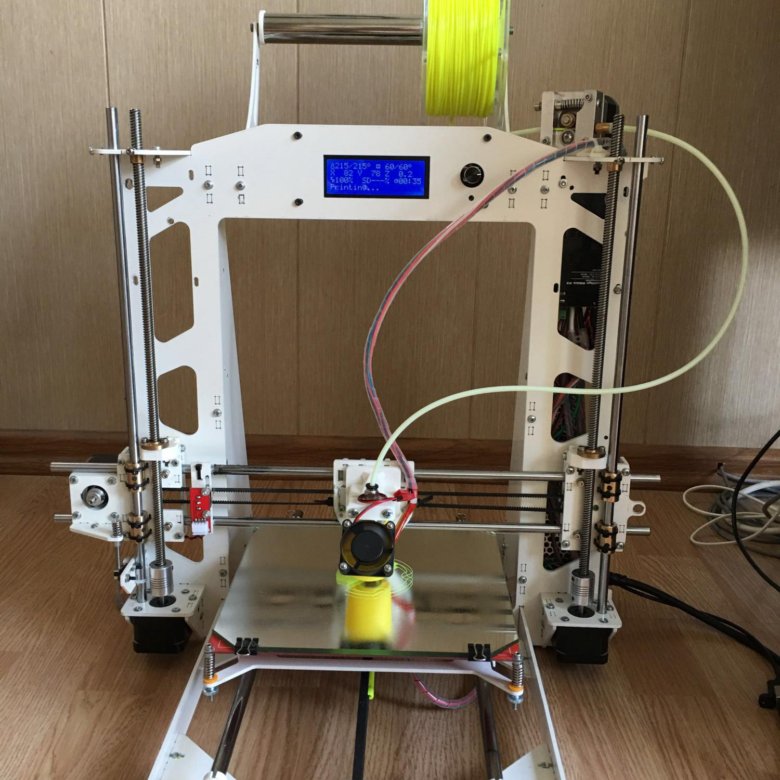 Plus point: The CHITUBOX Pro Slicer software is included in the purchase price.
Plus point: The CHITUBOX Pro Slicer software is included in the purchase price.
Photo Credits: Elegoo
The Sonic Mini 4k from Phrozen
Founded by a group of Taiwanese 3D printing enthusiasts in 2016, Phrozen offers professional and desktop 3D printers. After the success of their first LCD 3D printers, known as the “Phrozen Shuffle”, they created a new generation of LCD 3D printers, the Sonic series. Within this line, the Sonic Mini 4k stands out. With a precision level of 35 microns, the 3D printer takes between one and two seconds to solidify a layer. Featuring a 6.1-inch monochrome LCD screen, the Sonic Mini 4k has a print volume of 134 x 75 x 130 mm. If you are interested in the machine, its price is about $349.99.
Photo Credits: Phrozen
The Polaroid PlaySmart
Polaroid, the American camera company, has also developed a 3D printer called Polaroid PlaySmart. Launching in 2019, it offers a print volume of 120 x 120 x 120 mm and is based on extrusion technology.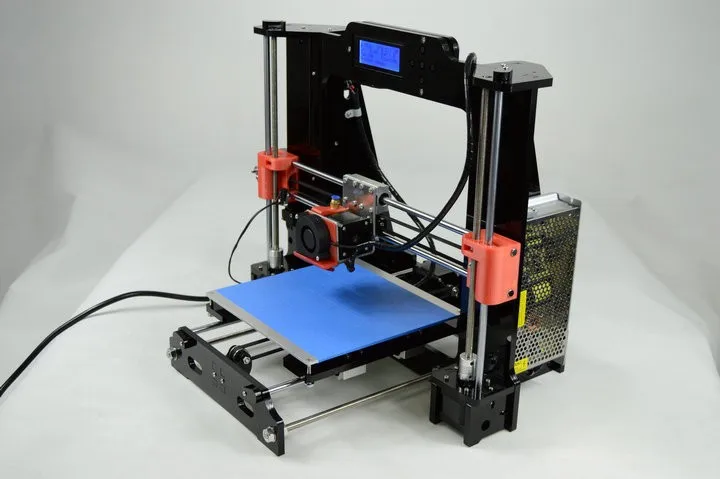 The PlaySmart can print with three different materials: PLA, P-Wood and PETG. Equipped with a Wi-Fi camera, the 3D printer allows its users to view the printing process live. The machine is very small, measuring 30 x 27 x 32 cm and weighing only 1 kg. Designed for beginners and 3D printing enthusiasts, the Polaroid PlaySmart costs € 375.
The PlaySmart can print with three different materials: PLA, P-Wood and PETG. Equipped with a Wi-Fi camera, the 3D printer allows its users to view the printing process live. The machine is very small, measuring 30 x 27 x 32 cm and weighing only 1 kg. Designed for beginners and 3D printing enthusiasts, the Polaroid PlaySmart costs € 375.
Photo Credits: Polaroid
The Original Prusa Mini +
The Original Prusa Mini + 3D printer is the latest desktop machine from Czech manufacturer Prusa, known for the Prusa i3 mk2 and mk3s. With the Mini +, Prusa wants to provide users with a solution that offers the same features as the previous models, while being available at a lower price. Based on the FFF process, the Original Prusa Mini + has a printing volume of 180 × 180 × 180 mm and prints with a layer thickness between 0.05 and 0.25 mm. The machine, which incorporates interchangeable nozzles and a color LCD screen, can be purchased either as a plug & play (available from €419) or as a kit (from €379).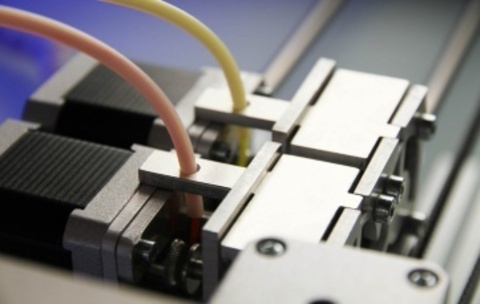
Photo Credits: Prusa
The Finder 2.0 from Flashforge
The Finder 2.0 from Chinese manufacturer FlashForge is designed for 3D printing novices and educators. The 3D printer was also designed for children, and includes a removable print tray for easy cleaning. This FDM printer creates objects with biodegradable PLA, and has a build volume of 140 x 140 x 140 mm. It also features WiFi connectivity and automatically detects when a roll is finished. The printer has 50 micron accuracy and automatic calibration. It is available on the manufacturer’s website for a price of $349
Photo Credits: Flashforge
The Sidewinder x2 from Artillery
An improved version of the Sidewinder x1, the Sidewinder x2 is a 3D printer from Chinese manufacturer Artillery based on the FFF process. The 3D printer, which comes pre-assembled, offers a print volume of 300 x 300 x 400 mm. With a speed of up to 150 mm/sec, the machine offers a layer thickness of between 0.1 and 0.35 mm. The temperature of the nozzle can go up to 240 degrees Celsius. Compatible with filaments from other manufacturers, the Sidewinder x2 is sold at a price of $469. The manufacturer also offers other budget-friendly 3D printers in its lineup, such as the Artillery Genius and Genius Pro.
Compatible with filaments from other manufacturers, the Sidewinder x2 is sold at a price of $469. The manufacturer also offers other budget-friendly 3D printers in its lineup, such as the Artillery Genius and Genius Pro.
Photo Credits: Artillery
Magis by Dagoma, a Cheap French 3D printer
The Magis is the latest version of the French manufacturer’s delta 3D printer. It would be even easier to use than its big sister, still with this single button system that allows to start, stop and resume printing. It offers a printing volume of 180 x 200 x 200 mm and a precision of 100 microns. It still integrates its end of filament detection system as well as an automatic calibration of the printing plate. More than 50% of the parts of the small desktop machine are 3D printed. You will find it on the market from 499€.
Photo Credits: Dagoma
The Bresser REX
Developed by Bresser, a German manufacturer of technological tools, the Bresser REX 3D printer is aimed at people already initiated to 3D printing but especially at beginners. With a printing volume of 150 x 150 x 150 mm, the machine is based on the FFF process. Equipped with a heated and flexible printing plate, the Bresser REX would be, according to the manufacturer, easy to use, especially thanks to its intuitive touch screen. Compatible with PLA and ABS, the 3D printer offers a printing accuracy of 0.1 mm. Moreover, Bresser specifies that thanks to its compact size, the dimensions of the machine are 400 x 380 x 405, and its relatively light weight, it weighs 9 kg precisely, it is possible to install it in various places. Finally, thanks to the HEPA filter integrated into the 3D printer, the ambient air is guaranteed to remain clean during the entire printing process. For those who would like to buy the Bresser REX, it is sold new for €489 by the manufacturer.
With a printing volume of 150 x 150 x 150 mm, the machine is based on the FFF process. Equipped with a heated and flexible printing plate, the Bresser REX would be, according to the manufacturer, easy to use, especially thanks to its intuitive touch screen. Compatible with PLA and ABS, the 3D printer offers a printing accuracy of 0.1 mm. Moreover, Bresser specifies that thanks to its compact size, the dimensions of the machine are 400 x 380 x 405, and its relatively light weight, it weighs 9 kg precisely, it is possible to install it in various places. Finally, thanks to the HEPA filter integrated into the 3D printer, the ambient air is guaranteed to remain clean during the entire printing process. For those who would like to buy the Bresser REX, it is sold new for €489 by the manufacturer.
What is your favorite out of our chosen cheap 3D printers? Is there another one you would recommend? Let us know in a comment below or on our Linkedin, Facebook, and Twitter pages! Don’t forget to sign up for our free weekly Newsletter here, the latest 3D printing news straight to your inbox! You can also find all our videos on our YouTube channel.
Best 3D Printer for 2022
In this article:
- What to Consider Before Buying a 3D Printer
- The Best 3D Printers
- Best 3D Printers for Beginners
- Midrange 3D printers
- High-end and professional 3D printers
- 3D Scanners
- 3D printing FAQs
In the last few years, 3D printing has become much more commonplace and accessible for hopeful hobbyists. No longer do you have to make a trip to your local university or library to print out 3D objects as inexpensive machines have started to offer fantastic results straight out of the box.
Because 3D printing technology has come a long way in recent years, I've doubled down on being creative and gotten into 3D scanning and laser cutting as well, which lets you sculpt real-world designs from leather and wood. Advanced makers are also using resin machines that create amazingly detailed prints.
Current 3D printers, which range from affordable (under $300) to high-end (over $4,000), are great gifts for a creative person in your life.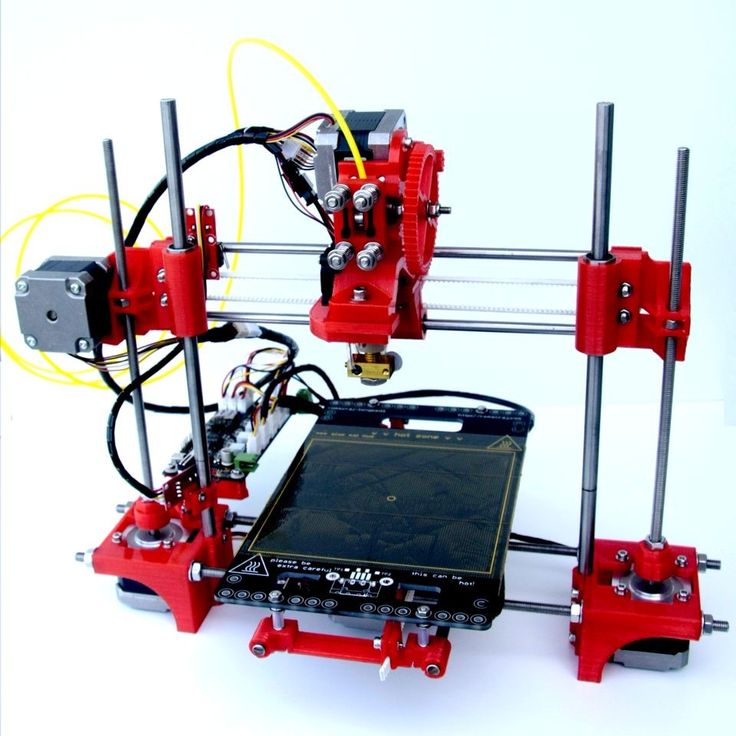 Even better, they're great for you to craft your own personalized designs if you're looking to open an Etsy shop or something similar.
Even better, they're great for you to craft your own personalized designs if you're looking to open an Etsy shop or something similar.
These models by Fotis Mint are extremely detailed.
James Bricknell/CNETWe've taken a deep dive into many of the best 3D printers available today. This list includes both small and large 3D printers, with attention paid to print speed, the size of the build plate, the cost of PLA filament, the kind of print head included and other important details. And once you've decided to take the plunge into additive manufacturing -- that's what 3D printing essentially is -- there's an FAQ below.
What to Consider Before Buying a 3D Printer
Purchasing your first 3D printer can be nerve-wracking but don't worry; we are here to help. There are a few main areas that you should consider when choosing the best 3D printer and we have them covered here.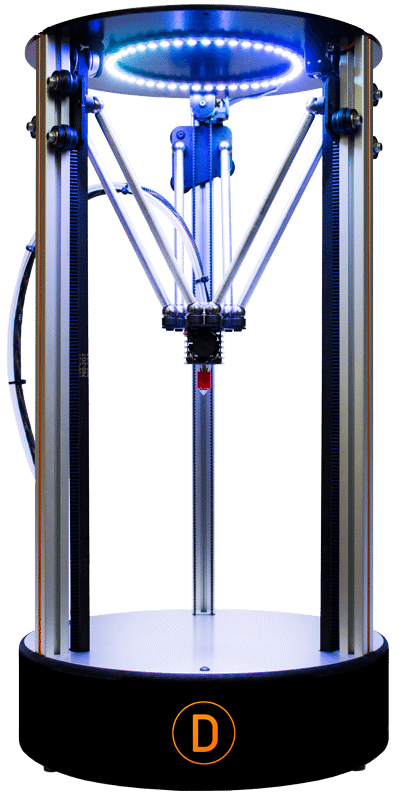
What am I 3D printing?
When deciding on what 3D printer to buy you first have to know what type of things you want it to print. Resin 3D printing is good for highly detailed models such as character busts, dental work or tabletop miniatures. Even jewelry can be made using a resin 3D printer.
For almost every other application, an FDM, aka filament, 3D printer is likely the best choice. Filament 3D printing is versatile in the types of material you can use and offers much larger build volumes to work on models. Cosplay armor and helmets, practical parts and large-scale models are best printed on an FDM printer.
Read more: What is 3D Printing?
What is build volume?
Build volume is the amount of space a printer has to produce a model. Often calculated in millimeters cubed, it is the combination of the width, height and depth that your printer's nozzle can reach. This is not always the same as the internal volume of a 3D printer because the wiring and other mechanical parts can get in the way of the nozzle, reducing the area available.
Most FDM printers have a build area of around 220 by 220 by 250mm, though some of the best 3D printers have larger and a few of the best budget 3D printers have smaller. I think the 220 by 220mm build plate is a good size for starting out as it has room for large, practical pieces or several smaller models at once.
Should I wait for a deal to buy a 3D printer?
3D printers are often available throughout the year at a discount price. Special days like Prime Day, Black Friday and Cyber Monday are great occasions to pick yourself up a new machine, but there are still plenty of deals to be had on a normal day. Make sure you stay fluid and choose your 3D printer deal based on the availability of the machine and what your research has told you is the best.
The Best 3D Printers
Dan Ackerman/CNET
Creality Ender-3 S1
Best 3D Printer for Beginners
I'd avoided Ender-3 printers for a long while, because they came in kit form and required many hours of assembly, setup and fine-tuning to use. For just a little more than the kit versions, the newer Ender-3 S1 comes nearly fully preassembled, and with high-end features like a direct drive extruder and self-leveling bed.
For just a little more than the kit versions, the newer Ender-3 S1 comes nearly fully preassembled, and with high-end features like a direct drive extruder and self-leveling bed.
Print quality even out-of-the-box was excellent, although a lot of that comes down to having good models to work from. I'd love it to have a touchscreen and Wi-Fi, but apart form those missing features, this is a great way to get polished results from a $400 3D printer.
Read our Creality Ender-3 S1 review.
$399 at Amazon
$340 at Creality3d
You're receiving price alerts for Official Creality Ender 3 S1 3D Printer with Direct Drive Extruder CR Touch Auto Leveling High Precision Double Z-axis Screw Silent Board Printing Size 8.6X8.6X10.6in, Upgrade Ender 3 V2 for Beginners
James Bricknell / CNET
Prusa Mk3S Plus
The standard candle for home 3D printing
No best 3D printer list is really complete without the Prusa MK3S Plus. For nearly a decade it has dominated the market and continues to be the go-to printer for anyone looking to make a business from 3D printing. It is fast and creates quality prints every time. I can count the number of print fails from MK3 on one hand, and I have had it for nearly seven years. If you have the $800, you should buy one of these.
For nearly a decade it has dominated the market and continues to be the go-to printer for anyone looking to make a business from 3D printing. It is fast and creates quality prints every time. I can count the number of print fails from MK3 on one hand, and I have had it for nearly seven years. If you have the $800, you should buy one of these.
$800 at Prusa Research
James Bricknell / CNET
AnkerMake M5
Speed and quality combined
The AnkerMake M5 is a new breed of 3D printer. Its speed is unrivaled on this list and the quality of the end product is on par with anything I've seen. When you can get this quality level in a 3D print job in around half the time of its closest competitor, it's hard to recommend anything else for someone with the money to buy one.
Read our AnkerMake 5 review
$799 at AnkerMake
Dan Ackerman/CNET
Anycubic Vyper
Best for out-of-the-box printing
The Anycubic Vyper FDM printer attempts to be both an affordable 3D printer and easy to use.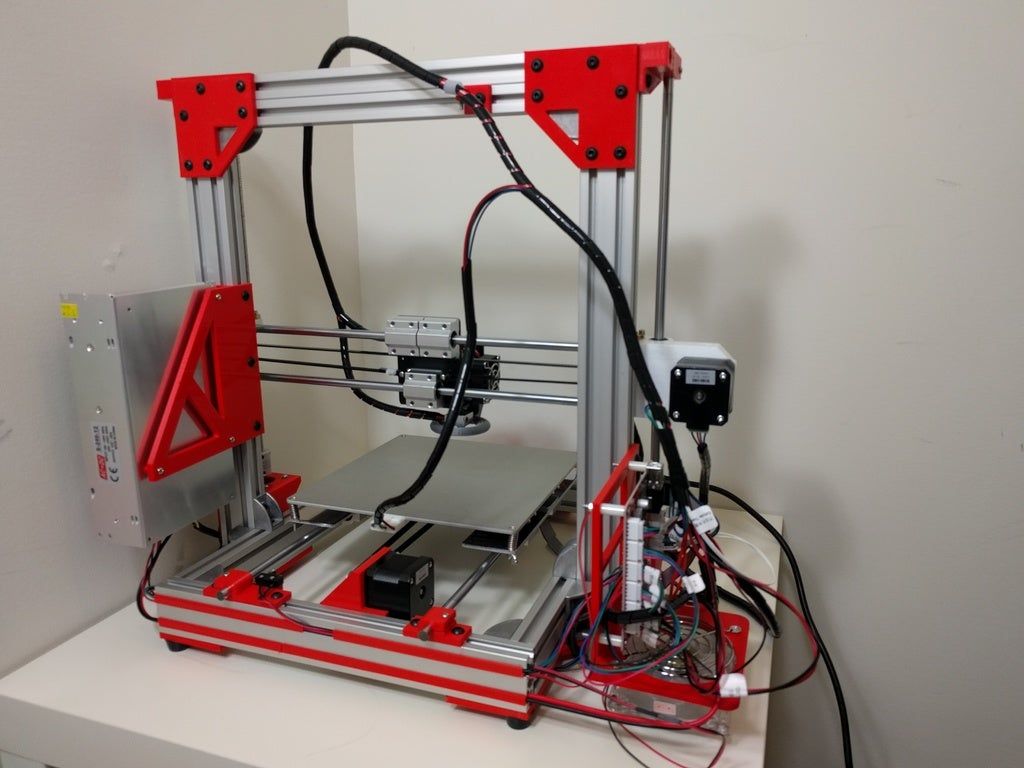 It's a tricky needle to thread. Plenty of 3D printers offer automatic bed leveling and calibration to make sure prints come out even and firmly anchored to the print bed. This, however, is the first time I've seen a 3D printer run its bed leveling once, with zero manual input from me, and be totally good to go. I printed a 3D test file from the included SD card within minutes of powering on, and I've never seen a first print from a 3D printer come out so perfectly.
It's a tricky needle to thread. Plenty of 3D printers offer automatic bed leveling and calibration to make sure prints come out even and firmly anchored to the print bed. This, however, is the first time I've seen a 3D printer run its bed leveling once, with zero manual input from me, and be totally good to go. I printed a 3D test file from the included SD card within minutes of powering on, and I've never seen a first print from a 3D printer come out so perfectly.
Read our Anycubic Vyper review.
$359 at Anycubic
Anycubic
Anycubic Kobra Max
Best to make big projects easily
The Anycubic Kobra Max earned a 9 out of 10 in our recent review, in large part because it's one of the most enjoyable printers I've used in years. The build area is large enough to print entire helmets for cosplay, and the auto-bed-leveling system makes setting the machine up a breeze. The Kobra Max is the best choice for a large build area printer, bar none.
Read our Anycubic Kobra Max review.
$529 at Anycubic
Best 3D Printers for Beginners
These 3D printers are excellent for anyone just starting out in 3D printing. Check out our expanded list of the best budget 3D printers for more in this category.
Prusa Research
Prusa Mini Plus
Small but mighty
The Mini Plus is one of the best small-footprint printers you can buy. It has everything you would expect from a Prusa machine: Auto bed leveling, crash detection and great print quality, all for under $450. Building it with my son gave us a lot of good insights into how a 3D printer works, and potentially how to fix one.
$429 at Prusa Research
Sarah Tew/CNET
Anycubic Mono
Best inexpensive resin 3D printer
Resin printers are the next step up in rapid prototyping design technology when you want your printing to look as high quality as possible. Just be warned: The liquid resin is harder to work with, and it requires both good ventilation and a portable UV light to properly cure. This model is extremely popular with board game hobbyists who want to print pro-looking miniatures, and sometimes you'll see it fall in price. Note that you can save $20 at Amazon by activating the instant coupon on the product page.
$250 at Amazon
You're receiving price alerts for ANYCUBIC Photon Mono 4K, Resin 3D Printer with 6.23" Monochrome Screen, Upgraded UV LCD 3D Printer and Fast & Precise Printing, 5.19" x 3.14" x 6.49" Printing Size
Dan Ackerman/CNET
Monoprice Mini Delta V2
Best for tiny desks
I had high hopes for this dirt-cheap 3D printer with a tiny footprint. It's usually under $200 and requires no additional assembly. And I do like it, but it's for a specific audience. This is not the great low-cost entry-level printer I was hoping for. It required some tweaking and troubleshooting to get up and running. The included microSD card was so cheap and corrupted it never worked, the built-in Wi-Fi was never able to connect to my network, and the machine's arms got caught on some poorly installed plastic wire covers (I just ripped the paper-thin covers off).
But once I had all the problems ironed out, it was a reliable little machine for quick jobs. It would make a great second 3D printer, or if you need to fit one into a small space. I especially liked the auto-leveling, which worked well, and the color touchscreen, which is a feature that often gets chopped from low-cost models. If you're willing to put a little effort into getting it set up correctly, it's a great printer for the price.
$180 at Amazon
Midrange 3D printers
James Bricknell / CNET
Elegoo Saturn 2
The best resin experience right now
The Elegoo Saturn 2 is an almost perfect upgrade from the original Saturn. It is bigger and more powerful, with better quality prints than its predecessor and my No. 1 choice for a midrange resin 3D printer. If you are looking to print serious details or a lot of tiny models, this is simply the best choice. It's $671 on Amazon, but you can get it for $60 off when you apply a coupon at checkout.
$510 at Amazon
You're receiving price alerts for ELEGOO Saturn 2 8K MSLA 3D Printer, UV Resin Photocuring Printer with 10-inch 8K Monochrome LCD, 8.62x4.84x9.84 Inch Larger Printing Size
James Bricknell/CNET
Flashforge Adventurer 4
Best 3D printer for ease of use
The Flashforge Adventurer 3 has long been one of CNET's favorite midprice 3D printers. The updated Adventurer 4 brings a handful of iterative improvements that make for a winning evolution. The Adventurer 4 is a fully enclosed unit, which helps control the temperature and block drafts. The build area is 220 by 200 by 250mm, and it has a system for easily swapping out nozzles -- all good features to have in a mid-level to high-end printer.
The build area is 220 by 200 by 250mm, and it has a system for easily swapping out nozzles -- all good features to have in a mid-level to high-end printer.
$749 at Amazon
You're receiving price alerts for Flashforge Adventurer 4
High-end and professional 3D printers
Creality
Creality CR-30
Best for small biz or pro cosplayers
A word of warning; the CR-30 is not for the beginners out there. It is a complicated machine, and you will need some 3D-printing knowledge to really get the hang of it. It's also a very different beast, and instead of printing on a static-sized build plate, it uses a conveyor belt to create an "endless Z-axis." That lets you print very long things or lots of things over and over again.
If you are a cosplayer looking to make weapons or large armor pieces, the CR-30 gives you a lot of room to create. I've managed to print Squall's Gunblade from Final Fantasy VIII as well as the Whisper of the Worm from Destiny 2 (both were printed in two halves and attached together). It's great for small businesses looking to mass-produce small parts, and with just two CR-30s you could create a small empire on Etsy or Shopify. --James Bricknell
It's great for small businesses looking to mass-produce small parts, and with just two CR-30s you could create a small empire on Etsy or Shopify. --James Bricknell
$1,100 at Amazon
You're receiving price alerts for Creality CR-30
Sarah Tew/CNET
Glowforge 3D Laser Cutter
Best for woodworkers
I can't begin to tell you how much I love the Glowforge. Laser cutters can create projects from wood, leather, lucite and other materials, making it an interesting creation alternative to filament-based 3D printers. Even better, what would take a 3D printer hours to do takes just minutes in the Glowforge.
With it, I've created laser-etched LED lights, birch wood tool caddies, and even a three-tier box for my Nespresso sleeves. There's a robust community of makers creating and sharing files, but pretty much any line drawing you can create in something like Adobe Illustrator can be turned into a project.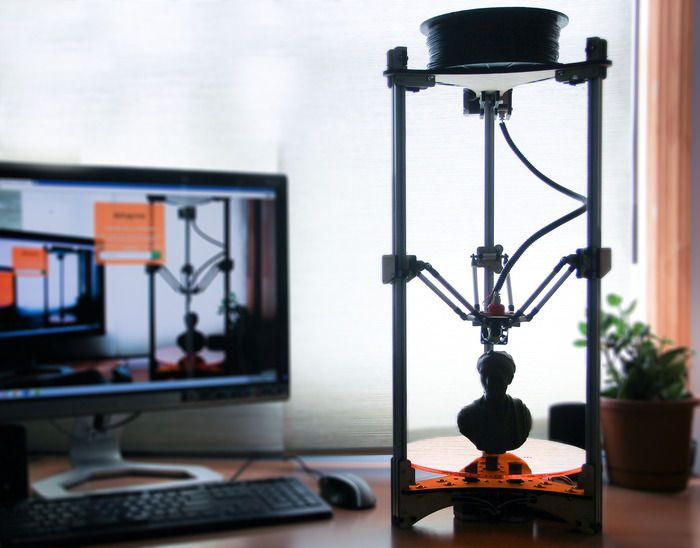
The software is all cloud-based, which adds a layer of complication (you need internet service to use it), but the ability to create amazing gifts and more from simple 0.125-inch or 0.25-inch cheap plywood is pretty empowering.
See some of my laser cutter projects (and download my SVG files) here.
$3,995 at Glowforge (Glowforge Basic)
$4,995 at Glowforge (Glowforge Plus)
3D Scanners
Revopoint
Revopoint Pop 2
Incredible details
While the software has a pretty steep learning curve, the end result is extremely detailed. I've really enjoyed using the handheld version to scan larger models while the included turntable makes scanning smaller objects a breeze. If you are looking for a professional-grade scanner and can spend some time on the software, the Pop 2 is a great choice.
$669 at Amazon
You're receiving price alerts for Revopoint Pop 2
Sarah Tew/CNET
SOL Desktop Laser 3D Scanner
Best 3D scanner for easy replicas
Recreate pretty much anything by putting it on this 3D scanner, where a rotating base and built-in camera create a 360-degree copy, which is then editable in any 3D program and printable on your 3D printer.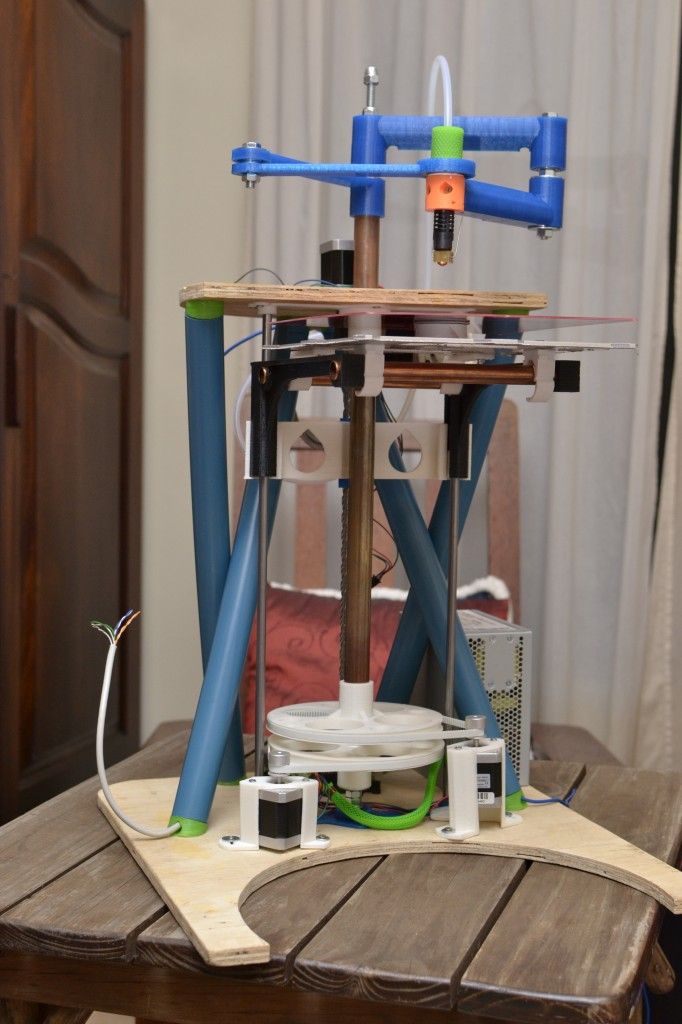 Simply scan the object, import the scan into your slicing software for cleanup, and print. The included software alerts you of next steps in the printing process with either sound or texts. Scan quality and print resolution are great, and setup is easy, although you might want to clean up your 3D model a bit in a 3D software app after.
Simply scan the object, import the scan into your slicing software for cleanup, and print. The included software alerts you of next steps in the printing process with either sound or texts. Scan quality and print resolution are great, and setup is easy, although you might want to clean up your 3D model a bit in a 3D software app after.
$648 at Amazon
You're receiving price alerts for SOL Desktop Laser 3D Scanner
Black Friday deals 2022
Black Friday deals are here! Check often for CNET's coverage on the best Black Friday deals this season.
3D printing FAQs
What material should I use to print with?
Most home 3D printers use PLA or ABS plastic. Professional printers can use all sorts of materials, from metal to organic filament. Some printers use a liquid resin, which is much more difficult to handle. As a beginner, use PLA. It's nontoxic, made mostly of cornstarch and sugarcane, handles easily and is inexpensive. However, it's more sensitive to heat, so don't leave your 3D prints on the dashboard of a car on a hot day.
Which brand of PLA is best?
Generally speaking, Hatchbox has never let me down and runs about $25 for a full 1kg spool on Amazon. Some of the printers I tested only accommodate narrower 0.5kg spools. In those cases, I sometimes used a larger Hatchbox roll with a separate spool-holder. Other times, I had good luck with AIO Robotics 0.5kg spools, which are a little more expensive, at $14 for 0.5kg. Amazon Basics and Monoprice can also be good, but for any brand, weird colors like metallic or glow-in-the-dark filament can be hit-or-miss. Note that a 1kg roll prints a lot of stuff.
What settings should I use?
Most 3D printers include or link to recommended software, which can handle converting 3D STL or other files into formats supported by the printer. Stick with the suggested presets to start, with one exception. I've started adding a raft, or bottom layer of filament, to nearly everything I print. It has cut down dramatically on prints that don't adhere to the bed properly, which is a common issue.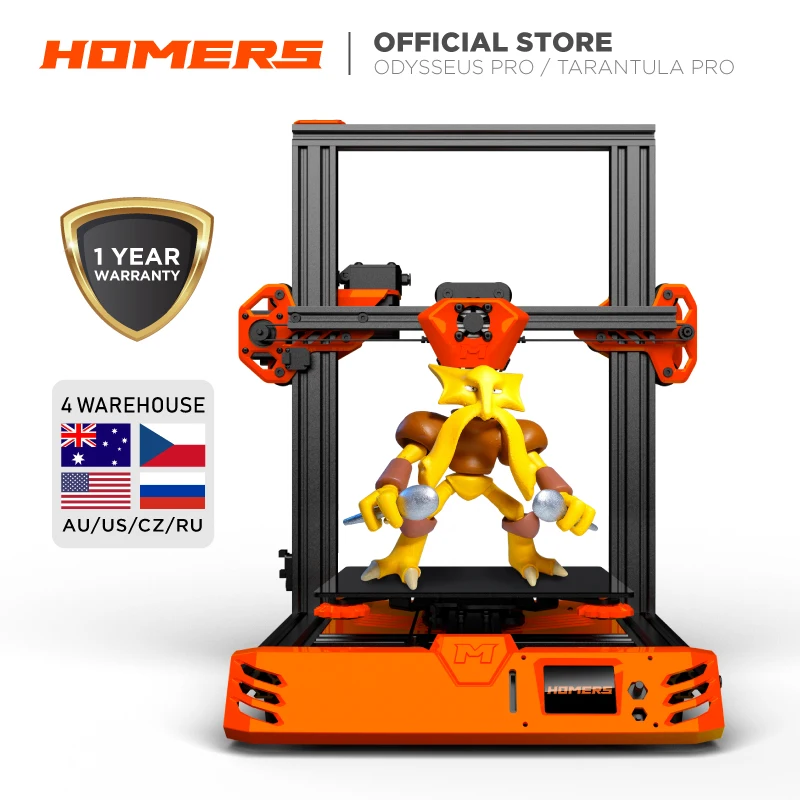 If you continue to have problems, rub a standard glue stick on the print bed right before printing.
If you continue to have problems, rub a standard glue stick on the print bed right before printing.
What are supports?
Your 3D models probably need some help to print properly, as these printers don't do well with big overhangs -- for example, an arm sticking out from a figure. Your 3D printer software can usually automatically calculate and add supports, meaning little stands that hold up all those sticking-out parts of the model. After the print is done, clip the supports off with micro cutters and file down any nubs or rough edges with hobby files.
Where do I find things to print?
Thingiverse.com is a huge online repository of 3D files for anything and everything you can think of. Pokemon chess set? It's there. Dyson vacuum wall mount? You bet.
When you're ready to create your own designs, there are a ton of software packages to choose from, but it's easiest to start with the browser-based free TinkerCad app from Autodesk.
Crazy things I've made on a 3D printer
+15 more See all photosMore creative recommendations
- Best 3D Printer Filament
- Best Budget 3D Printer
- Best Laptops, Desktops and Tablets for Designers and Creatives in 2022
- Best Vlogging Camera for 2022
- The Best 3D Printer Resin
TOP-15 best models in terms of quality and reliability
A 3D printer is a device used for 3D printing. In this article, we will tell you how to simplify the search for the necessary 3D printer model among the variety on the market. We analyzed the options available in online stores, studied their functionality, got acquainted with the technical characteristics and user reviews. Here we present the ranking of the best 3D printers for 2022-2023. They are grouped by the most popular request categories.
In this article, we will tell you how to simplify the search for the necessary 3D printer model among the variety on the market. We analyzed the options available in online stores, studied their functionality, got acquainted with the technical characteristics and user reviews. Here we present the ranking of the best 3D printers for 2022-2023. They are grouped by the most popular request categories.
Ranking of the best 3D printers for 2022-2023
| Place | Designation | Price | Description |
|---|---|---|---|
| Best 3D printers by price/quality for 2022-2023 | |||
| 1 | Wanhao D12/500 | Ask for a price | Best in price/quality for 2022-2023 as selected by users |
| 2 | Creality 3DPrintMill CR-30 | Ask for a price | High quality 3D printer using conveyor printing method |
| 3 | Phrosen Schuffle XL Lite | Ask for a price | Stable and easy to use large format 3D printer |
| Best Kids Education 3D Printer | |||
| 1 | Creality Ender 7 | Ask for a price | Best Educational 3D Printer for Kids |
| 2 | Anycubic Vyper | Ask for a price | Excellent value for money 3D printer with new board and high performance control chip |
| 3 | Flying Bear Aone | Ask for a price | Budget model of children's educational 3D printer |
| Top Industrial 3D Printers | |||
| 1 | Anycubic Photon Mono X | Ask for a price | The best industrial printer according to experts today |
| 2 | Phrozen Sonic Mighty 4K | Ask for a price | Robust 3D printer for industrial projects |
| 3 | CF Chef | Ask for a price | A new chocolate 3D printer that is suitable for creating various types of chocolate figurines |
| Top Resin 3D Printers | |||
| 1 | Creality HALOT ONE PLUS | Ask for a price | Best Large Area Resin 3D Printer Chosen by Users Today |
| 2 | Phrozen Sonic 4K 2022 | Ask for a price | Good photoresin 3D printer often used in dentistry and dental laboratories |
| Best Home 3D Printers | |||
| 1 | Creality Ender 3 Pro | Ask for a price | Best 3D printer for home projects |
| 2 | Flash Forge Adventurer 3 | Ask for a price | Reliable and high quality 3D printer for various home projects |
| Best Inexpensive 3D Printers | |||
| 1 | Creality Ender 3 | Ask for a price | Best budget 3D printer available as a do-it-yourself device |
| 2 | Anycubic Mega-S | Ask for a price | Inexpensive 3D printer with excellent functionality |
Contents
- Top 3D printers 2022-2023 ranking
- How to choose a 3D printer?
- Best 3D printers by price/quality for 2022-2023
- technology and volume of printing;
If you are going to produce high precision and small parts, SLA or DLP is the way to go.
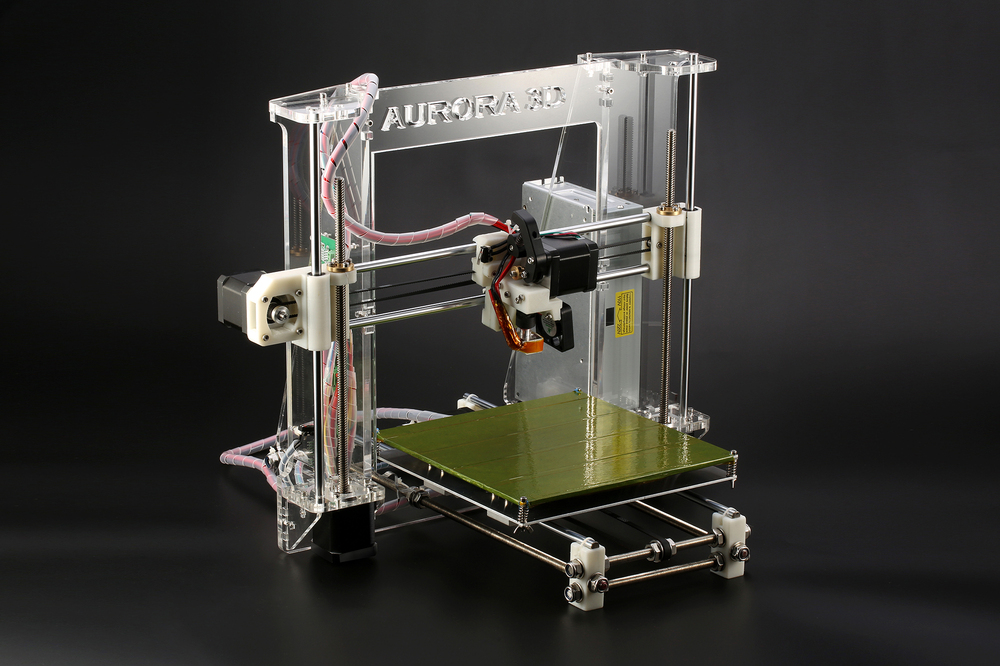 If the range of tasks is wider and low manufacturing cost is important, then your choice is an FDM printer.
If the range of tasks is wider and low manufacturing cost is important, then your choice is an FDM printer. - working space size;
Many 3D printers have a working space of 200x200x200mm. This is enough for most tasks. However, you may need a smaller size, or vice versa, you will need a larger one, it depends on your needs.
- print precision;
Nozzle size affects print accuracy. Not only smooth layers depend on it, but also the detailing of the model. A smaller nozzle diameter gives more detail, but slower production speed. Many printers have the ability to change the nozzle for a specific task.
- platform heater;
The presence of this function ensures better adhesion of the first layer. Engineering plastics, for example, cannot be used without heating the table, since the figures can warp.
- camera type;
Can be open or closed.
 The latter options are usually presented on more expensive and advanced models.
The latter options are usually presented on more expensive and advanced models. - number of extruders;
When printing complex elements, you will need a model with two materials and corresponding extruders in order to be able to print supports from soluble material. Models with a large number of angles greater than 30 degrees or a large number of hanging elements are called complex. If the models are not too complex, one extruder will suffice, which will greatly help save the budget.
- print speed;
The parameter implies the maximum head movement speed. A 14x4x10 tablet stand will print approximately 6-6.5 hours at 100mm/sec.
- functionality;
Printers can support wireless communication with various devices: phones, tablets, etc., as well as memory devices. Plus, as a rule, printers are already equipped with software when they are sold. Pay attention to the compatibility of the OS with the OS of the computer.

Best Price/Quality 3D Printer 2022-2023
1. Wanhao D12/500
Wanhao D12/500 is the best price/quality 3D printer for 2022-2023 as voted by users. A 3D printer that is great for mass production. The optimal size of its zone makes it possible to print a large model in one cycle. The control system here is intuitive and clear, the user can easily calibrate the printer to fit his needs.
The Wi-Fi connection helps you connect to your PC or laptop. Extruders will allow you to print using supports. The color display with touch keys will be an excellent assistant in setting up the device.
Designed with a heavy duty frame and adjustable straps. The working surface is automatically heated to achieve adhesion to the first layers of plastic. The switch is equipped with 2 fuses for emergency protection.
Specifications:
- Print technology: FDM/FFF/PJP
- working space dimensions: 500x500x500 mm;
- print speed (extruder speed): 150 mm/s;
- number of extruders: 2;
Advantages:
- 2 extruders;
- high speed printing;
- workspace size;
Drawbacks:
- cost;
2.
 Creality 3DPrintMill CR-30
Creality 3DPrintMill CR-30 The Creality 3DPrintMill CR-30 is a quality 3D printer using a conveyor printing method, which is perfect for small and medium businesses with the ability to organize mass production. Instead of a platform, there is a nylon-based transport tape with excellent adhesive properties.
The design allows printing of long products of non-standard dimensions. Three powerful fans provide excellent airflow. Management is carried out using a convenient display, which is located on the right side of the case. There is an SD slot for downloading files offline.
End of filament sensor will stop the device if the filament breaks. In the event of a power failure, auto-update will help restore functionality. The maximum extruder temperature is 240 degrees.
Specifications:
- Print technology: FDM/FFF/PJP;
- working space dimensions: 200x170 mm;
Advantages:
- wireless connection;
- the ability to adjust the temperature and speed;
- is suitable for small and medium businesses;
Disadvantages:
- noisy;
3.
 Phrosen Schuffle XL Lite
Phrosen Schuffle XL Lite The Phrosen Schuffle XL Lite is a stable and easy to use large format 3D printer. It makes it possible to print both large models as a whole, and many small ones at once. The new matrix shows excellent print accuracy. The software is included in the kit, so it is quite easy to manage the device.
The printer is suitable for dentistry, jewelry and prototyping as it prints reliably with high precision. The double linear guide guarantees long-term operation without interruption.
Operation is simplified by the large and bright display with an easy-to-use touch panel. The device can be used not only by professionals, but also by amateurs. Z-axis of the printer is stable, has zero fluctuations during printing.
Specifications:
- print technology: DLP, LCD;
- print material: photopolymer;
Advantages:
- acceptable cost;
- high precision printing;
- stable Z-axis;
Disadvantages:
- sometimes there are some difficulties when changing already programmed material;
Best Kids Educational 3D Printer
1.
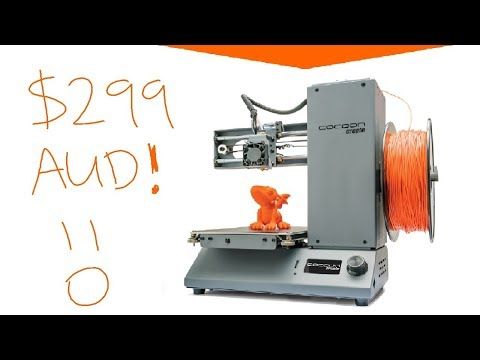 Creality Ender 7
Creality Ender 7 The Creality Ender 7 is the ultimate children's educational 3D printer and one of the fastest in the mainstream segment. Its speed is its main trump card, but you need to remember that it is impossible to work with some types of thermoplastic at high speed. In general, not very high-precision details are printed quickly.
Operation is carried out using a convenient display, which is located in the central part of the housing. For downloading files offline, there is an SD slot and a USB connector. The maximum extruder temperature is 260 degrees.
The print platform is heated to 100 degrees. The nozzle has one of the most popular diameters of 0.4 mm. The printer is also equipped with a filament control sensor, and calibration is automatic.
Specifications:
- Print technology: FDM/FFF/PJP;
- working space dimensions: 250x250x300 mm;
- print speed (extruder speed): 250 mm/s;
Advantages:
- reasonable cost;
- high speed printing;
- large working space;
Faults:
- small print area;
2.
 Anycubic Vyper
Anycubic Vyper The Anycubic Vyper is a great value 3D printer with a new board and high performance Cortex M3 control chip. It features good speed and smooth operation. It prints not only accurately, but also silently. The platform has a high-strength coating that provides easy removal of the finished model.
The blower system consists of a pair of fans that will allow you to quickly cool the models. Management is carried out using a large touch screen. It features a new interface, simple and smooth operation, and the ability to switch languages to English and Chinese.
The electronic system automatically calibrates the platform with sixteen points. The dimensions of the device are compact, and the working space is large. Printing is recommended at a speed of 80-100 mm/sec.
Specifications:
- Print technology: FDM, FFF, PJP;
- working space dimensions: 245x260x245 mm;
- print speed (extruder speed): 100mm/s;
Advantages:
- quick and easy to assemble;
- silent operation of the device;
- convenient and clear control;
Disadvantages:
- not very convenient location of the coil;
3.
 FlyingBear Aone
FlyingBear Aone The FlyingBear Aone is a low cost educational 3D printer for kids in a compact package suitable for home projects. It comes as a self-assembly kit. Its case is open, like many inexpensive models. The printing table is heated from 60 to 100 degrees Celsius.
Print speed up to 100 mm/sec. Management is carried out using a special color touch screen, which is located at the bottom of the printer.
The USB port can be used to connect to a PC or laptop, while the SD slot is suitable for stand-alone operation. The power supply is installed in the bottom of the case and is built-in. The extruder is equipped with a nozzle with a diameter of 0.4 mm.
Specifications:
- Print technology: FDM, FFF, PJP;
- working space dimensions: 190x190x190 mm;
- print speed (extruder speed): 100mm/s;
Advantages:
- fast and clear assembly;
- inexpensive 3D printer;
- is easy to use for beginners;
Disadvantages:
- very noisy fans;
Best industrial 3D printers
1.
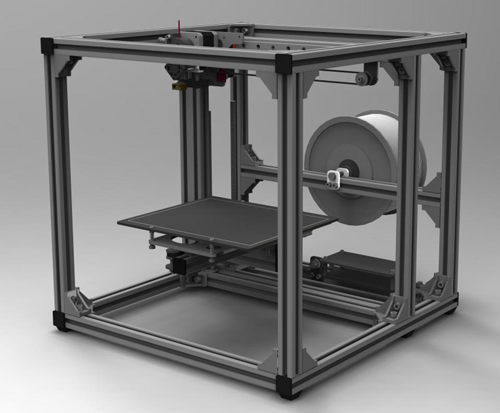 Anycubic Photon Mono X
Anycubic Photon Mono X The Anycubic Photon Mono X is the best industrial printer according to experts today. It has the largest printable area among resin printers. It features good speed and smooth operation. It prints not only accurately, but also silently. The platform has a high-strength coating that provides easy removal of the finished model.
Controlled by large touch screen. It features a new interface, simple and smooth operation. The dimensions of the device are compact, and the working space is large.
Printing recommended at 80-100 mm/sec. The printer is equipped with a wireless Wi-Fi connection to connect to the Internet, to a computer or laptop. The matrix light source consists of UV LEDs. This improves accuracy and reduces exposure time.
Specifications:
- Print technology: LCD, SLA;
- working space size: 120x245x192 mm;
Advantages:
- high detail;
- large height and print area;
- comfortable and bright screen;
Disadvantages:
- high cost of spare parts;
2.
 Phrozen Sonic Mighty 4K
Phrozen Sonic Mighty 4K The Phrozen Sonic Mighty 4K is a robust 3D printer for industrial projects with a large build area and fast print speed. It is an excellent choice for both creative and professional use. The new matrix shows excellent print accuracy.
The software is included, so the device is easy to operate. The printer is suitable for dentistry, jewelry work and prototyping, as it has a reliable print with high accuracy.
Double linear guide ensures long, trouble-free operation. Operation is simplified by the presence of a large and bright display with a convenient touch panel. The device can be used not only by professionals, but also by amateurs. Z-axis of the printer is stable, has zero fluctuations during printing.
Specifications:
- Print technology: DLP/LCD/SLA;
- working space dimensions: 200x220x125 mm;
- printing speed (layer building): 80 mm/h;
Advantages:
- quiet operation;
- fast printing;
- compact dimensions of the device;
Disadvantages:
- high cost;
3.
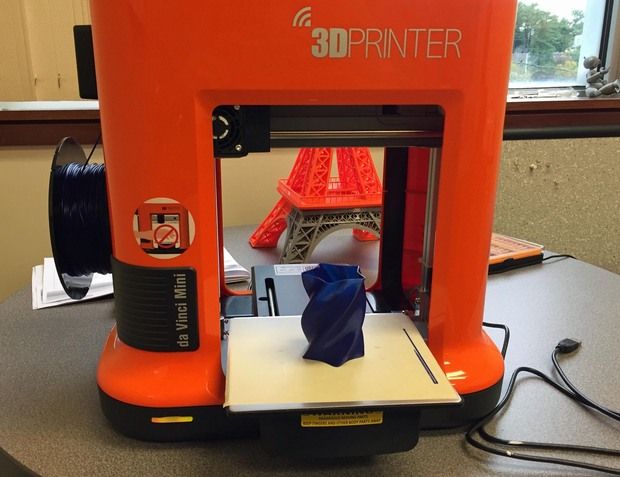 CF Chef
CF Chef CF Chef is a new chocolate 3D printer that is suitable for creating various types of chocolate figurines. It can be used to create openwork chocolate toppers for confectionery, print corporate chocolate gifts, make text messages and logos, and print chocolate figures.
The dimensions of the printer are 300x300x380 mm, so it can be placed in any room, but the working area is quite large. The printing time of chocolate models depends on their complexity. The printer allows you to create 2D, 2.5D and 3D products. You can use a USB cable or a wireless WI-FI connection to connect to a computer. The printing speed can reach 100mm/s.
Specifications:
- print material: tempered chocolate and chocolate glaze;
- print speed: 100 mm/s;
Advantages:
- the ability to connect to a computer or laptop;
- good print speed;
- is suitable for the food industry;
Drawbacks:
- cost;
Top 9 Resin 3D Printers0005
1.
 Creality HALOT ONE PLUS
Creality HALOT ONE PLUS Creality HALOT ONE PLUS is the best large area photoresin 3D printer according to users today. It can be used for both business and home projects. The device is controlled using a convenient display, which is located in the central part of the case.
Wi-Fi port and USB port for uploading files and updating firmware. The nozzle has one of the most popular diameters of 0.4 mm. The printer is also equipped with a filament control sensor, and calibration is automatic.
UV source for improved detail and print quality. Windows and Mac OS are compatible with the printer. Quad-core ARM Cortex M4 processor provides high power and performance, as well as stable operation.
Specifications:
- Print technology: LCD;
- working space dimensions: 102x160x172 mm;
Advantages:
- low cost;
- the presence of a USB connector;
- UV source;
Drawbacks:
- 1 extruder;
2.
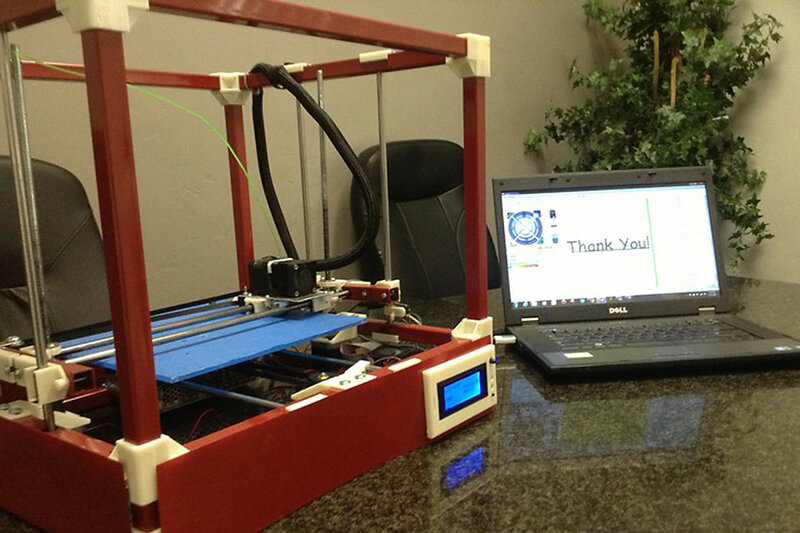 Phrozen Sonic 4K 2022
Phrozen Sonic 4K 2022 The Phrozen Sonic 4K 2022 is a good photopolymer 3D printer that is often used in dentistry and dental laboratories. The new matrix shows excellent print accuracy. The software is included in the kit, so it is quite easy to manage the device.
The printer is suitable for dentistry, jewelry and prototyping as it prints reliably with high precision. The double linear guide guarantees long-term operation without interruption.
Operation is simplified by the large and bright display with an easy-to-use touch panel. The device can be used not only by professionals, but also by amateurs. Z-axis of the printer is stable, has zero fluctuations during printing. In the event of an unexpected power outage, operation can be resumed from the point at which it was stopped.
Specifications:
- Print technology: DLP, LCD;
- working space size: 134x200x75 mm;
Advantages:
- increased accuracy;
- excellent performance;
- availability of various interfaces;
Disadvantages:
- very high cost;
Best 3D printers for home
1.
 Creality Ender 3 Pro
Creality Ender 3 Pro The Creality Ender 3 Pro is the ultimate 3D printer for home projects. It is quick to assemble, easy to understand and set up and ensures stable operation. Both an experienced user and a beginner can handle it.
Operation is carried out using a convenient display, which is located in the central part of the housing. For downloading files offline, there is an SD slot and a USB connector. The nozzle has one of the most popular diameters of 0.4 mm.
The printer is also equipped with a filament control sensor and calibration is automatic. The device can be used both as a main and as an additional to professional equipment. Branded power supply makes the device more stable. The camera of the printer is open, like many inexpensive models.
Specifications:
- Print technology: FDM, FFF, PJP;
- working space dimensions: 220x250x220 mm;
- print speed (extruder speed): 180mm/s;
Pros:
- is great for beginners thanks to easy assembly;
- simple and inexpensive repair;
- inexpensive model;
Disadvantages:
- noisy model;
2.
 FlashForge Adventurer 3
FlashForge Adventurer 3 FlashForge Adventurer 3 is a reliable and high quality 3D printer for various home projects. With its use, you can print pre-prepared files. The device has a closed chamber. The supply end sensor will tell you when to add it. The printer will automatically stop when the media runs out.
The nozzle has a typical diameter of 0.4 mm. It is made of stainless steel, which perfectly resists mechanical stress and quickly warms up during operation. LAN, USB and WI-FI interfaces allow you to connect to a computer or laptop. The printer is compatible with all major operating systems: Windows, Linux, MAC, which will be a big plus. The main working program FlashPrint will provide professionals and hobbyists with all the basic functions to work with.
Specifications:
- print technology: FDM, FFF, PJP;
- working space size: 150x150x150 mm;
- print speed (extruder speed): 100mm/s;
Advantages:
- convenient and clear slicer;
- works silently;
- flexible detachable platform;
Disadvantages:
- expensive to repair;
Best Inexpensive 3D Printers
1.
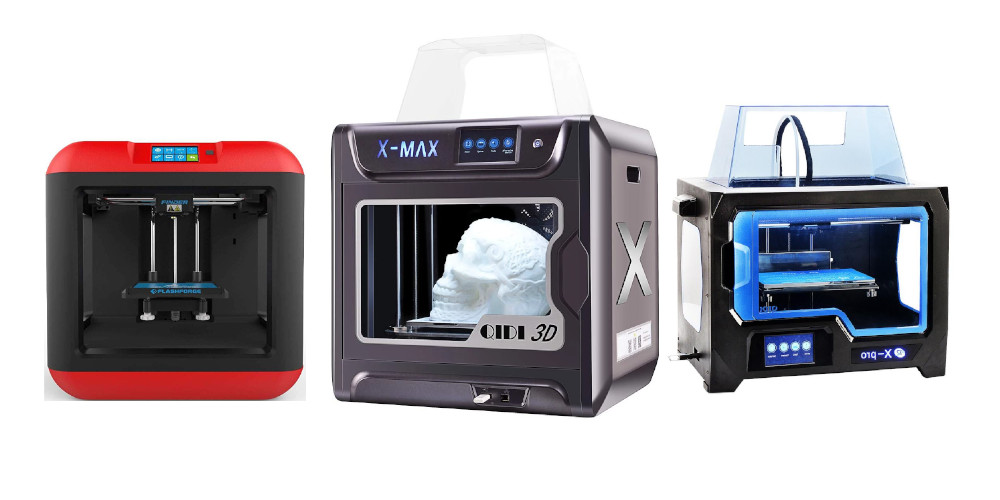 Creality Ender 3
Creality Ender 3 The Creality Ender 3 is the ultimate budget 3D printer that comes as a DIY kit. The device is controlled using a convenient display, which is located in the central part of the case. For downloading files offline, there is an SD slot and a USB connector.
One of the most popular nozzle diameters is 0.4 mm. Mechanical and electronic parts of the device are separated from each other. The device can be used both as a main and as an additional to professional equipment.
Proprietary power supply makes the device more stable. The camera of the printer is open, like many inexpensive models. The workspace allows you to manage most projects. Even a beginner can handle this device.
Specifications:
- Print technology: FDM, FFF, PJP;
- working space dimensions: 220x250x220 mm;
- print speed (extruder speed): 180mm/s;
Pros:
- platform area is great for most applications;
- simple and clear assembly;
- budget model;
Disadvantages:
- slightly skewed in the Z-axis due to design features;
2.
 Anycubic Mega-S
Anycubic Mega-S The Anycubic Mega-S is an inexpensive 3D printer with excellent functionality that reproduces plastic products in layers. It features good speed and smooth operation. It prints not only accurately, but also silently. The platform has a high-strength coating that provides easy removal of the finished model.
The dimensions of the device are compact and the working space is large. Printing is recommended at a speed of 80-100 mm/sec. After a power loss, the device automatically resumes the interrupted operation.
The control is carried out using a special display. The camera of the device is open, like most inexpensive models. The new extruder allows you to choose not only standard types of plastic, but also its more flexible varieties.
Specifications:
- print technology: FDM, FFF, PJP;
- working space dimensions: 210x205x210 mm;
- print speed (extruder speed): 100mm/s;
Advantages:
- prints well with a minimum number of settings;
- ease of assembly;
- budget model;
Disadvantages:
- the original firmware does not provide printing from a computer;
Which company to choose?
Good quality 3D printer companies: Creality, Anycubic and Phrozen.
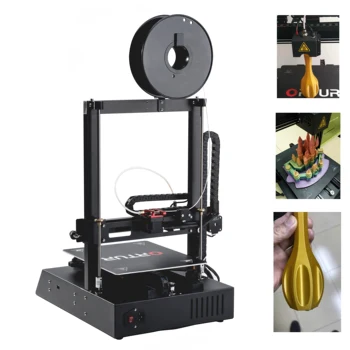
Choosing the right 3D printer model is easy if you stick to the list of criteria you need. The more precisely you can determine the necessary parameters, the more and longer you will be pleased with the service life of the device.
Useful video
Review of models and tips on which one to choose in the video below:
The best 3D printers for home, office or studio
How often have you thought about buying a 3D printer? There is nothing surprising if such a thought periodically visited you. Today, 3D printing has gone beyond the geek toy it once was, and the 3D printer has become a truly useful device for many creative people.
 Such printers can be used not only to produce parts for all kinds of design projects, but also to print useful home appliances. In addition, the ability to print with consumables such as metal, rubber, or even biodegradable filaments means that finished products will be strong and durable. And if you are an experienced 3D artist or designer, you can combine your skills and the capabilities of a 3D printer to the maximum.
Such printers can be used not only to produce parts for all kinds of design projects, but also to print useful home appliances. In addition, the ability to print with consumables such as metal, rubber, or even biodegradable filaments means that finished products will be strong and durable. And if you are an experienced 3D artist or designer, you can combine your skills and the capabilities of a 3D printer to the maximum. Be aware that not all 3D printers work the same way. Some use spools of plastic filament that is heated like a hot glue gun and then laid out in layers on the print bed. The print quality of such devices can be good, but some manual processing is often required to smooth out the layer lines. Some models use an LCD screen to shine light onto the resin, while other printers use a laser to solidify the melted resin.
If you do not want to do modeling, then the abundance of marketplaces with ready-made 3D models will allow you to get good results. Thingiverse, CG Trader and many other sites offer all sorts of models in .
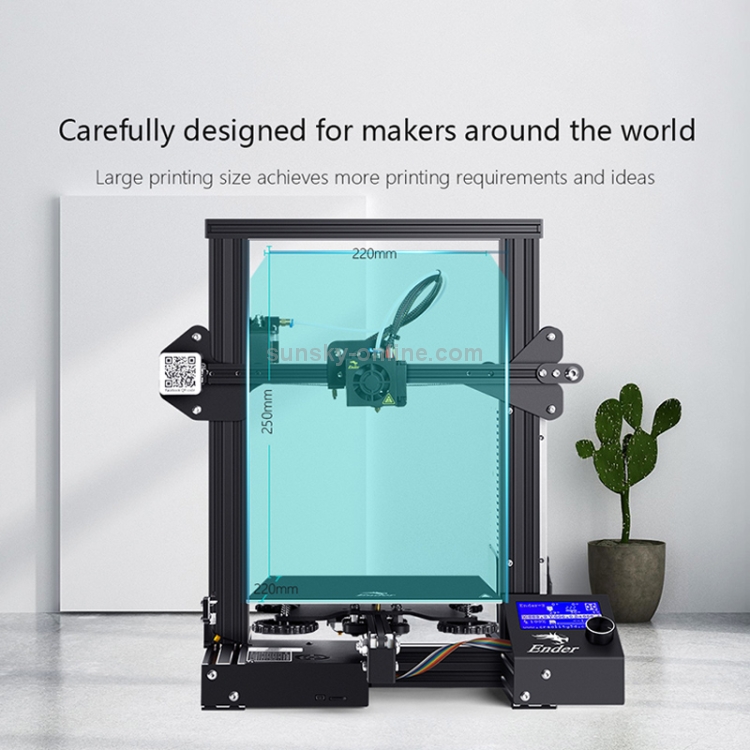 stl format that you can print with just a few clicks. Very often you can find free models.
stl format that you can print with just a few clicks. Very often you can find free models. Anycubic Vyper
Budget printer with good features
Price: $399.
Print volume: 245x245x260 mm.
Layer thickness: 100 µm.Pros:
- self-levelling bed included,
- excellent level of detail,
- good print speed.
Cons:
- the need for self-assembly.
All Anycubic 3D printers are good options, but as the most affordable FDM printer, the Vyper is the best deal. It has features not found in more expensive options, and produces prints with great detail and clarity, while doing so with minimal noise. The heated self-levelling print bed is a great feature, but adding a magnetic spring steel sheet to make it easier to remove prints is a win-win.
Ultimaker S3
Best solution for general 3D printing tasks
Price: $4,080.

Print volume: 230x190x200 mm.
Layer thickness: 20 µm.Pros:
- double extruders make life easier,
- is an excellent self-leveling heated build platform.
Cons:
- not the cheapest option,
- noise level is higher than some other printers.
Ultimaker printers come in a variety of sizes and capabilities, but the Ultimaker 3 is the model we deliberately included in our list of the best 3D printers. A 3D printer has most of the features you want from larger brethren, including dual extruders and nozzles of various sizes. This means that you can print models that would be difficult to print using PVA plastic, which dissolves in water. The Ultimaker 3 also has a print progress camera, a great touch screen interface and a solid build. If you need to master large volumes of printing, then choose the advanced version, which is a little more expensive.
Elegoo Mars 2 Pro
Best Resin Printing Solution
Price: $329.
 99.
99.
Print volume: 129x80x160 mm.
Layer thickness: 50 µmPros:
- excellent print quality at a reasonable price,
- fast printing at 1-2 seconds per layer.
Cons:
- self assembly required,
- Printing smoke can be annoying.
Elegoo is relatively new to the 3D printing market, but the original Mars printer made a good impression on the community. Mars 2 Pro only confirms the serious intentions of the manufacturer. The new 6” screen prints a layer in less than 2 seconds with no loss of clarity or blur, making this 3D printer one of the fastest resin printers around. In terms of prototyping speed, it's hard to beat unless you need larger objects, as the only real downside to the Mars 2 Pro is the small amount of printed assembly. Smoke when printing is typical for this type of printer.
Makerbot Replicator+
Universal 3D printer with FDM
Technology: 4500 dollars
Press volume: 295x195x165 mm
Layer thickness: 100 μmPluses:
- 9021
- a lot of options for connection.

Cons:
- takes up more space than most competitors,
- is not the cheapest option.
Makerbot has been around for a long time and is probably the best-known manufacturer of consumer 3D printers. Even Anna Kendrick used it in space in the movie Stowaway. Experience in this area has allowed Makerbot to maintain a similar area to previous models, but increase the volume of printing and reduce the noise level. This model provides a large number of connectivity options, including Wi-Fi. The Makerbot Replicator+ even has a camera so you can watch what's going on remotely. Printing results are good and need only a little manual refinement, because this is an FDM printer. The Replicator+ is a great and reliable option if you are looking to purchase a 3D printer for your home office, school or workshop.
Anycubic Photon mono SE
Best choice for printing 3D miniatures
Price: $449.89.
Print volume: 130x78x160 mm.
Layer thickness: 100 µm.Pros:
- excellent level of detail,
- smooth surface.
Cons:
- The pairs of highlights during printing can be unbearable,
- resin is expensive. Anycubic's
Photo Mono SE is a great choice if you like custom toys, collectibles or action figures from PC games as the detail on this printer is fantastic. Like other monochrome printers, it is fast enough. It only takes about a second to print one layer. The resin may have an unpleasant odor, but you can place the printer under an air exhaust cabinet. This is a small sacrifice for such a productive machine, which is really worth the money spent.
Markforged Onyx One
Best Metal Printer
Price: $4,794.
Print volume: 320x132x154 mm.
Layer thickness: 100-200 µm.Pros:
- reliable and durable prints,
- all in one desktop case.
Cons:
- expensive,
- metal filament spools are expensive.
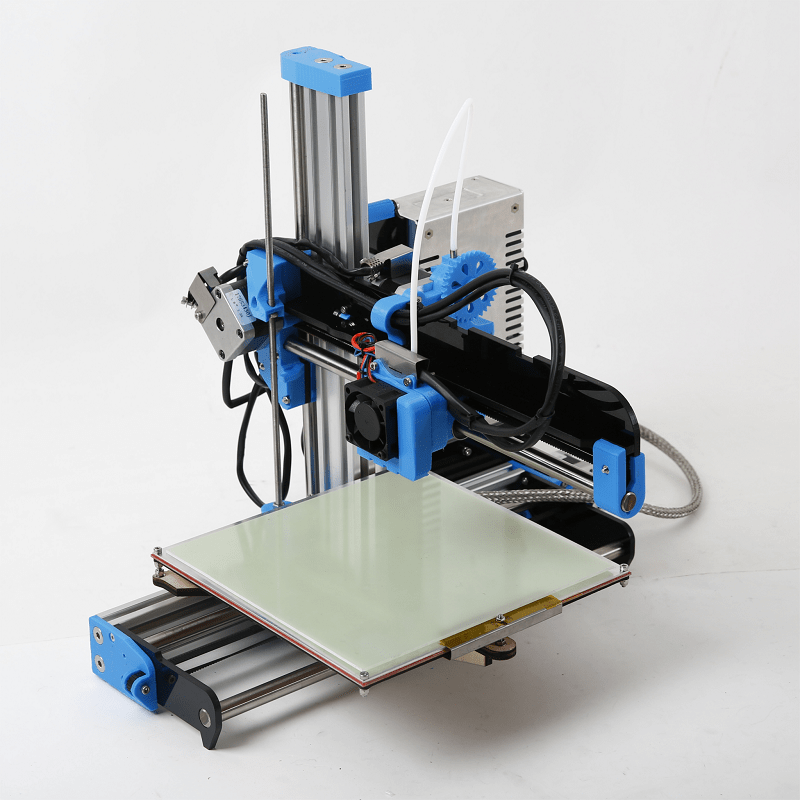
Onyx One prints out of durable metal, but the parts are actually carbon fiber. The main reason for choosing this technology is that although powdered metal filaments are available, they instantly destroy extruder nozzles, making the production of metal objects prohibitively expensive. Markforged solves this problem with a best-in-class desktop solution. So if you're looking for durable and reliable parts, this printer should be on your list. Just remember that a spool of filament can be quite expensive.
Creality Ender 3
Best Budget FDM 3D Printer
Price: $223.
Print volume: 220x220x250 mm.
Layer thickness: 100 µm.Pros:
- high quality components,
- ease of use.
Cons:
- open chassis,
- The typing sound can be quite loud.
Ender's range of 3D printers is known for its superior performance at an affordable price. And Ender 3 is a perfect example of this.
 At this price, you would think that Black Friday lasts all year round. Creality has somehow managed to inject some of the highest quality components into Ender 3. The printer comes in kit form, which may not be to everyone's liking, but the assembly process actually gives you a good idea of how the printer works and can help with troubleshooting if there are any in the future.
At this price, you would think that Black Friday lasts all year round. Creality has somehow managed to inject some of the highest quality components into Ender 3. The printer comes in kit form, which may not be to everyone's liking, but the assembly process actually gives you a good idea of how the printer works and can help with troubleshooting if there are any in the future. Formlabs Form 3
Best SLA Printer
Price: $3499.
Print volume: 145x145x185 mm.
Layer thickness: 15 µm.Pros:
- easy replacement of material cartridges,
- no layer visibility.
Cons:
- expensive,
- additional costs for obtaining a medical version.
The Formlabs Form 3 and its predecessor the Form 2 set the benchmark for SLA printers (3D printing technology based on the layer-by-layer curing of a liquid material under the action of a laser beam). And the FormLabs Form 3 is by far the best printer on the market.
 This is a rather expensive product, but the quality of the results speaks for itself. Products are obtained with invisible layers, and the printer itself is equipped with a system that allows you to remove the finished product without the use of cutters. In addition to the impeccable print quality, the big advantage here is the ease of use. Changing media is as easy as replacing a cartridge on a conventional printer. For a little more, you will have access to biomaterials for use in dentistry and medicine. Oh, and the PreForm software is simple and intuitive too.
This is a rather expensive product, but the quality of the results speaks for itself. Products are obtained with invisible layers, and the printer itself is equipped with a system that allows you to remove the finished product without the use of cutters. In addition to the impeccable print quality, the big advantage here is the ease of use. Changing media is as easy as replacing a cartridge on a conventional printer. For a little more, you will have access to biomaterials for use in dentistry and medicine. Oh, and the PreForm software is simple and intuitive too. 3Doodler
Best Portable 3D Printer
Price: $49.99
Pros:
- you can take it anywhere,
- no print volume limit.
Cons:
- expensive consumables,
- print quality is up to you.
One of the biggest limitations for 3D printing is the fixed volume. But since 3Doodler is a 3D printing pen, here you can print projects of any size.
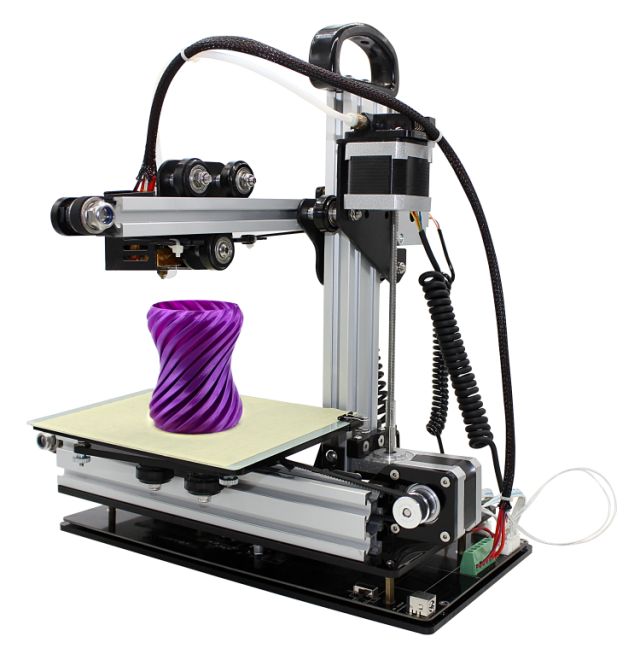 The cost of consumables can be quite high, especially if you are trying to model a car in 1:1 scale. What's more, it's fantastic fun to pick up a pen from a table top and draw lines in the air with plastic ink. The threads come in different colors, so you can consider it an added plus. But the downside is that you will have to rely only on yourself for printing accuracy, since the extruder is entirely in your hands, and not on rails. Several models are available, including 3Doodler Start (for kids) and a Pro version.
The cost of consumables can be quite high, especially if you are trying to model a car in 1:1 scale. What's more, it's fantastic fun to pick up a pen from a table top and draw lines in the air with plastic ink. The threads come in different colors, so you can consider it an added plus. But the downside is that you will have to rely only on yourself for printing accuracy, since the extruder is entirely in your hands, and not on rails. Several models are available, including 3Doodler Start (for kids) and a Pro version. EasythreeD K5
Best budget option, safe for kids
Price: $99.99.
Print volume: 80x80x100 mm.
Layer thickness: 100-400 µm.Pros:
- affordable entry point to 3D printing,
- fun and safety for kids.
Cons:
- tiny build platform,
- medium print quality.
It's hard not to love the EasythreeD K5 for its attractive looks and ease of use.
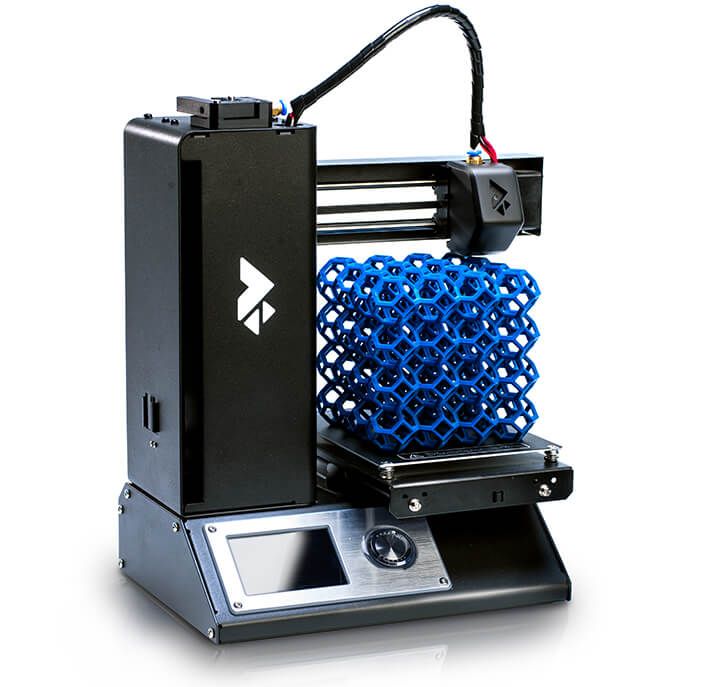
Learn more



